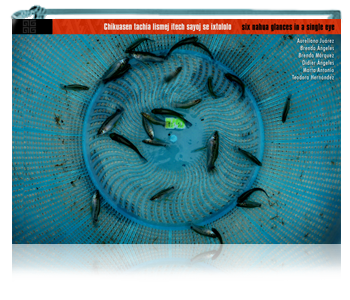|

PDF download
Photo Editing by Valeria Vega, Elisa Rugo
Text by Valeria Vega
Seventeen years have elapsed since Carlota Duarte created the Photographic Project in Chiapas, “to facilitate indigenous people’s access to photographic implements and materials by helping them to acquire skills in the use of the camera and dark room procedures.” (Duarte, 1998: 8). More recently, the Guelatao Photographic Workshop was set up in Oaxaca in 1998, directed since its inception by Mariana Rosenberg. In addition to teaching attendees to use a manual camera, use chemicals, develop film and print photographs in black and white, it offered sessions on the criticism and editing of images.
Although these efforts are and will continue to be a compulsory reference for the history of ethnic photography and those of us who attempt to train young indigenous photographers, nowadays, different objectives are required, since both ethnic groups and their situations have changed considerably.
On the one hand, the growing phenomenon of migration and exchange with other cultures has meant that young indigenous people are increasingly familiar with the use of digital cameras or VCRs, cell phones and computers. On the other hand, technological advances have virtually done away with dark rooms and paved the way for digital procedures, in which the Internet and growing social networks have become so popular that sooner or later, they were bound to involve indigenous groups. In short, as an inevitable result of these processes, we are witnesses to the speed at which the frontiers of otherness are erased.
|






